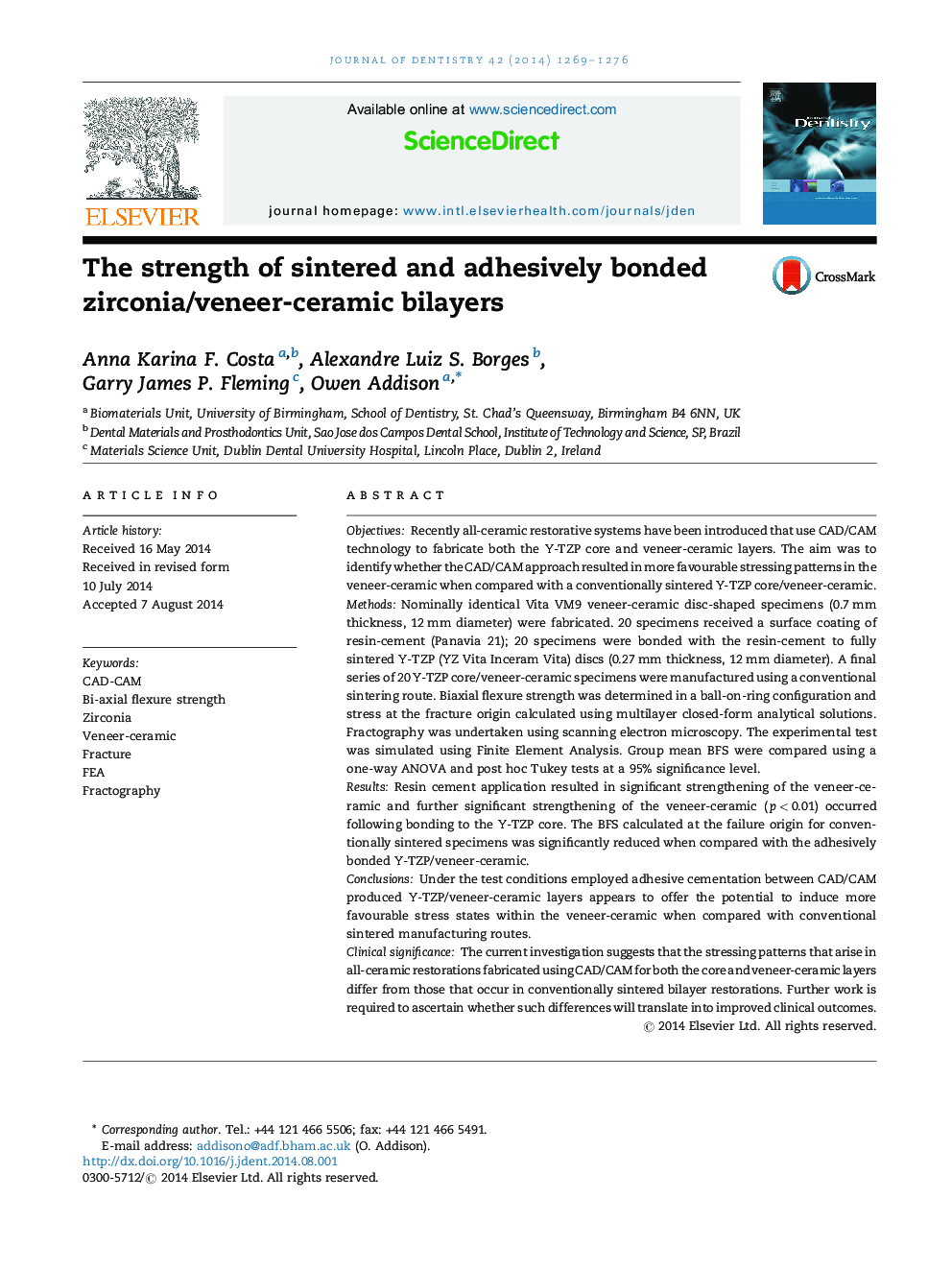| کد مقاله | کد نشریه | سال انتشار | مقاله انگلیسی | نسخه تمام متن |
|---|---|---|---|---|
| 6053045 | 1197007 | 2014 | 8 صفحه PDF | دانلود رایگان |
ObjectivesRecently all-ceramic restorative systems have been introduced that use CAD/CAM technology to fabricate both the Y-TZP core and veneer-ceramic layers. The aim was to identify whether the CAD/CAM approach resulted in more favourable stressing patterns in the veneer-ceramic when compared with a conventionally sintered Y-TZP core/veneer-ceramic.MethodsNominally identical Vita VM9 veneer-ceramic disc-shaped specimens (0.7 mm thickness, 12 mm diameter) were fabricated. 20 specimens received a surface coating of resin-cement (Panavia 21); 20 specimens were bonded with the resin-cement to fully sintered Y-TZP (YZ Vita Inceram Vita) discs (0.27 mm thickness, 12 mm diameter). A final series of 20 Y-TZP core/veneer-ceramic specimens were manufactured using a conventional sintering route. Biaxial flexure strength was determined in a ball-on-ring configuration and stress at the fracture origin calculated using multilayer closed-form analytical solutions. Fractography was undertaken using scanning electron microscopy. The experimental test was simulated using Finite Element Analysis. Group mean BFS were compared using a one-way ANOVA and post hoc Tukey tests at a 95% significance level.ResultsResin cement application resulted in significant strengthening of the veneer-ceramic and further significant strengthening of the veneer-ceramic (p < 0.01) occurred following bonding to the Y-TZP core. The BFS calculated at the failure origin for conventionally sintered specimens was significantly reduced when compared with the adhesively bonded Y-TZP/veneer-ceramic.ConclusionsUnder the test conditions employed adhesive cementation between CAD/CAM produced Y-TZP/veneer-ceramic layers appears to offer the potential to induce more favourable stress states within the veneer-ceramic when compared with conventional sintered manufacturing routes.Clinical significanceThe current investigation suggests that the stressing patterns that arise in all-ceramic restorations fabricated using CAD/CAM for both the core and veneer-ceramic layers differ from those that occur in conventionally sintered bilayer restorations. Further work is required to ascertain whether such differences will translate into improved clinical outcomes.
Journal: Journal of Dentistry - Volume 42, Issue 10, October 2014, Pages 1269-1276
